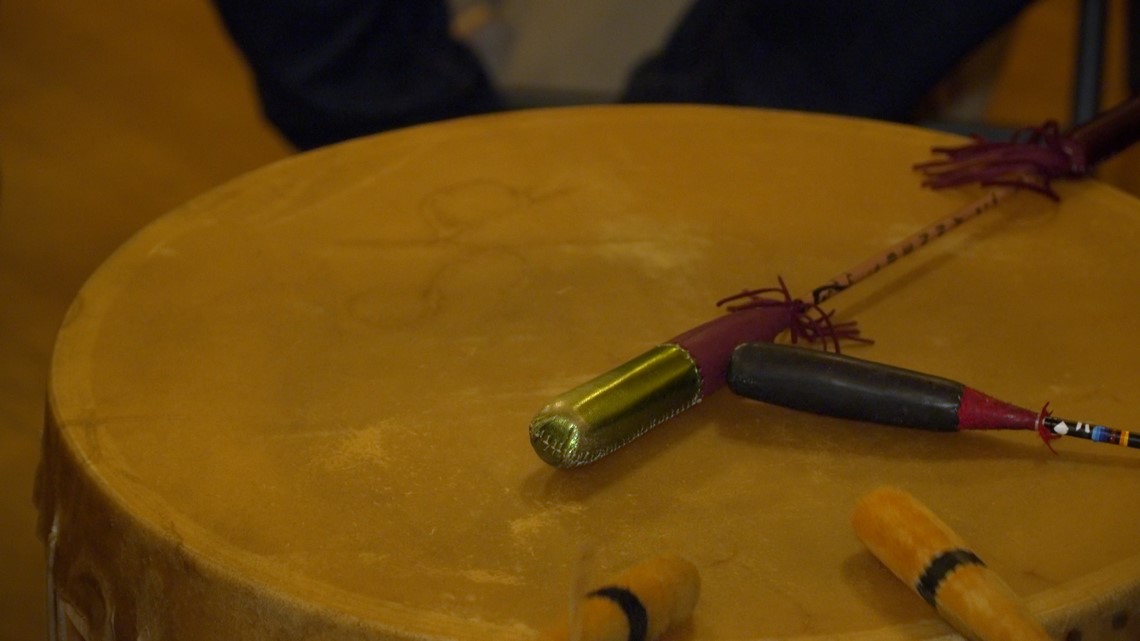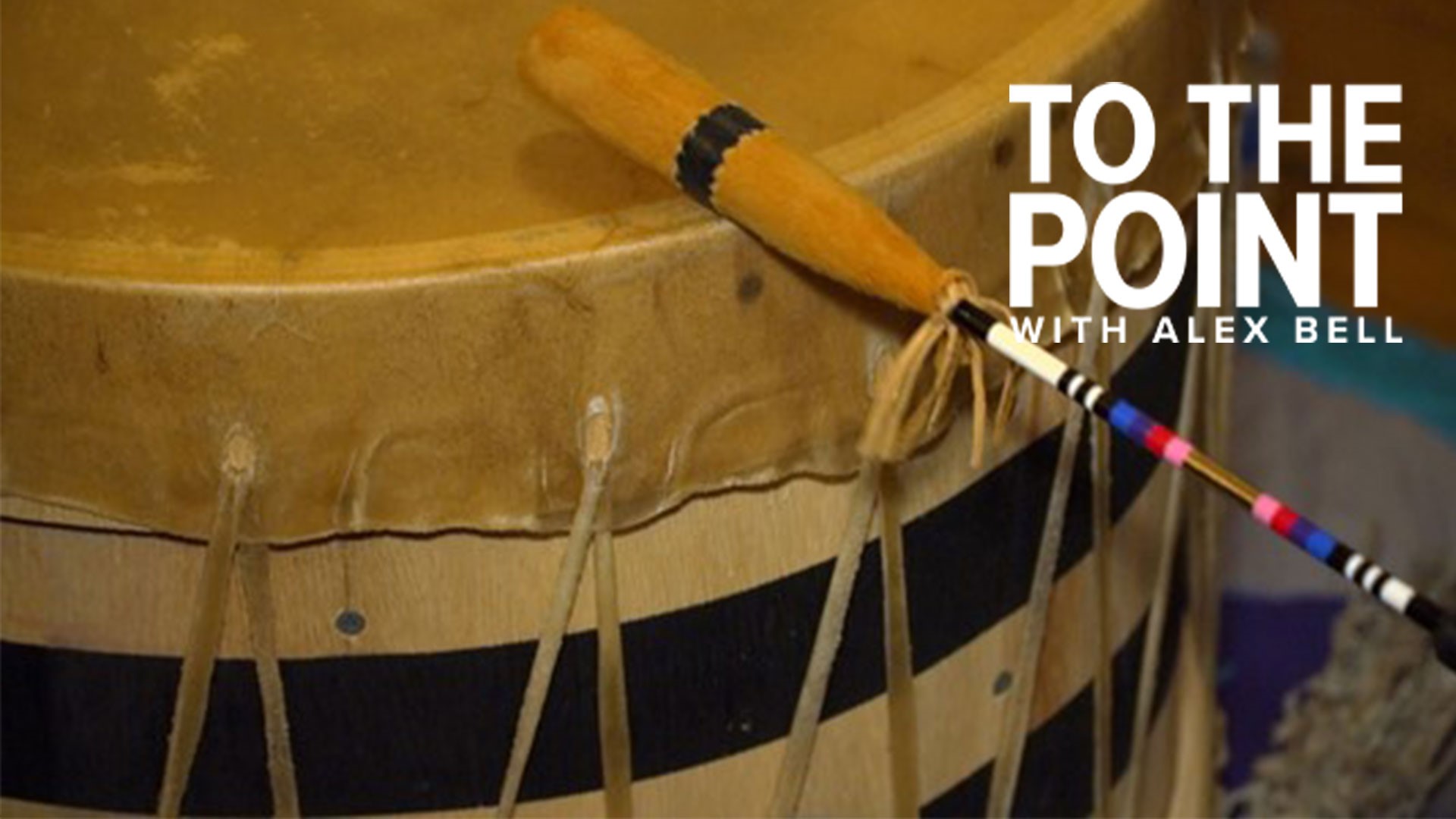SACRAMENTO, Calif. — November is Native American Heritage Month. It's a time to recognize the history, culture, and contributions of Indigenous people.
In Native American culture, drums are used to bring people together. But drumming is more than music.
Joaquin Rojas, who lives in Sacramento, says drums are sacred for Native people and their communities. As a Native American, he says he's been singing and drumming for more than 20 years.
Rojas is the lead singer of a Native drum group called the Red Hoop Singers. He says the beat of the drum symbolizes the heartbeat of Mother Earth and Indigenous Nations.
"We use our drums for everything in our community," Rojas said. "If we're able to sing for our community, then we are there. Part of being a singer in our culture is the responsibility of showing up when we're needed, being there when we're needed, and when we're called on, to always share our songs."


The Red Hoop Singers originated in Gardnerville, Nevada. 14 members are in the group from Neveda, California, Wyoming and Oregon.
Each member also represents a different tribe, like Washoe, Paiute, Shoshone, Lakota, Cree, Chumash, Dine', Confederated Tribes of Siletz, Confederated Tribes of Grand Ronde, and Northern Arapaho.
Together, the group travels across the nation to help teach Native youth and communities the importance of respecting the drum through songs, handed down from generation to generation. In Native communities, drums are treated like elders -- held in the highest regard.
"We wouldn't leave our elders out in the cold without a blanket," Rojas said. "We wouldn't leave our elders alone. So, we carry our drum with us and we keep it warm. We honor our drums the same way we honor our ancestors."
Indigenous people have been using drums for centuries in ceremonies, celebrations, and spiritual gatherings to communicate with tribal ancestors. Drums are also used to help heal the sick and vulnerable.
"When we're hitting that drum, we're making the heartbeat," Rojas said. "When we're singing, we're lifting prayers, positive thoughts, and our energy to who needs it. Long before we ever had Western medicine, our music and our dance is what healed our people, kept us well and got us through hard times."
Stoney Dodson is a member of the Red Hoop Singers, too. He was introduced to the importance of traditional Native singing and drumming at birth. Dodson says the drum is a personal connection to Native identity.
"The drum is the center of our people," said Dodson. "It's important for us be aware of it, know it, and become closer to it. I think it is also a way to become closer to our people, our culture, and our ways. I took my first steps in a powwow arena and I could dance before I could walk, sing before I could talk, and I feel lucky and blessed that I've gotten that opportunity."


There are all sorts of Native drums, like hand, powwow, sweat, and water, each with a specific size and purpose. Dodson explains that hand drums are used in round dance ceremonies.
A round dance is a Native tradition that brings people together. It's evolved over time into a dance of friendship, performed by all ages. It includes dancing in a clockwise circle.
Powwow drums are a focal point in Native American drumming circles. The drums are much larger, allowing more players and singers to sit around the drum in a circle to help bring communities together to celebrate Native culture and history.
For Dodson, the drum is a source of healing and protection. He says it provides opportunities for self-expression as well as time to grow closer to family, friends, and Native communities.
"The drum saved my life," Dodson said. "It's been there for me in times where I needed something to heal me or I needed something to turn to that was positive. This day and age, it's easy to turn to negative things, like social media and drugs or alcohol. I feel grateful that I can turn to the drum, instead."
Drums -- no matter the style or type -- continue to be a cultural lifeline for Native people and their communities.
That's why there's now a community drum at the Sacramento Native American Health Center (SNAHC). The Center is a non-profit in the Midtown area, "committed to enhancing the quality of life by providing a culturally competent, holistic, and patient-centered continuum of care."


Carlos Rivera selected SNAHC as the home to one of its four-directions community drums. Rivera is the founder and CEO of Generation Red Road. It's a non-profit organization with a mission "to revitalize and promote inter-generational healing by utilizing Indigenous teachings that provide harmony for individuals, families, and communities."
SNAHC welcomed and honored the large powwow drum Saturday night with a special ceremony at the Clunie Community Center. It included traditional Native dancing, singing, and food.
The event was sponsored by the California Indian Manpower Consortium, Inc. (CIMC), Generation Red Road, American Indian Health & Services (AIHS), and Wilton Rancheria.
"The drum gives us an outlet, especially for the youth," Rojas said. "Being in a city like Sacramento, there's a lot of kids growing up urban and not close to where their culture is at. But having a drum in the community gives them an outlet to express their culture, identity, and to get in touch with who they are."

